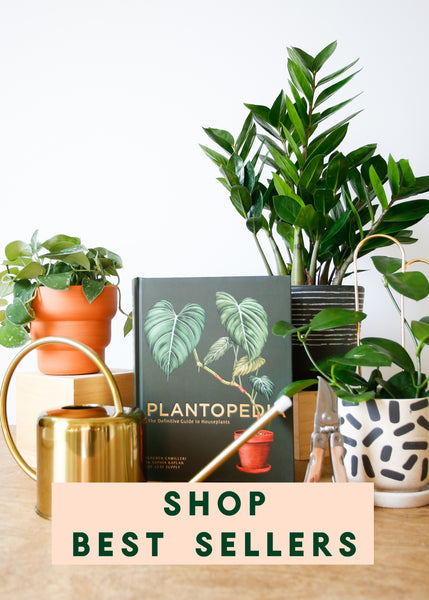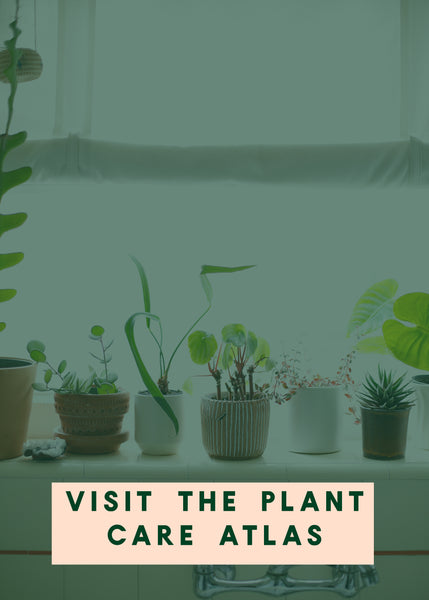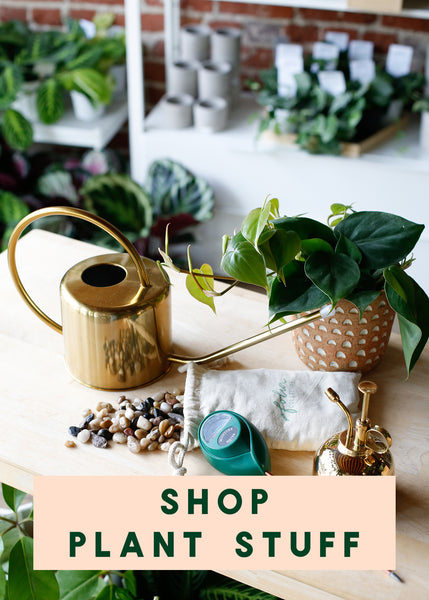Ask A Plant Pro: Differences in Care for Variegated Plants

(Photo: Ana Ramos)
Every month on our Instagram account we open up a question box for you to submit your plant questions. Think of it like a Dear Abby column but for plant-related questions. If we select your question, we'll send a treat to your Instagram inbox.
Dear Plant Pro,
Is there a difference in care between regular Pothos and 'N'Joy'? 'N'Joy' always rot/die on me.
-Vexed by variegation in Van Nuys
Though they are the same species, variegated varieties of many plants actually have different needs than their all-green relatives and require specialized care to thrive. While some issues like occasional browning or leaf drop are normal and to be expected with variegated plants, shifting your care for these plants will help prevent more serious health issues like root rot or extreme leaf loss.

Why is the care for variegated plants different?
There are many types of variegation, but for plants with white and green leaves, the distinct coloration (especially white coloration) of variegated leaves is most often due to a lack of chlorophyll in some portions of the leaf tissue, caused by a mutation in the DNA. That mutation can be an inherited genetic mutation, which produces stable variegation like we see in commonly found variegated plants like Epipremnum 'N'Joy'; or random chimeric mutation like you may see when an otherwise green plant puts out one variegated leaf and no further variegated leaves.
Why does this matter?
White leaf tissue has no chlorophyll, which means the plant essentially has to work harder to maintain all leaves because variegated leaves aren't photosynthesizing and contributing to the energy store in the plant. White tissue also more easily shows cell damage from things like nutrient deficiencies, hard minerals, and mechanical damage; and is more sensitive to excessive direct sun. All of these factors contribute to both aesthetic and health issues for variegated plants, but adjustments in placement and care can remedy many of those issues.
How do I care for variegated plants?
LIGHT
The more variegation a plant has, the brighter the light it will need. This means that while a 'Jade' or 'Golden' Epipremnum (aka Pothos) can tolerate medium light fairly well, a variegated variety like 'N'Joy', 'Snow Queen', or 'Marble Queen' will need brighter filtered light.
Bright filtered light, often described as "bright indirect" light means an area within a few feet of a window that gets bright light most of the day. The brightest light will be in front of the window- not to the side, or below it. Imagine the plant has eyes- can it see the sky from where it sits? If so, that is probably bright indirect light. If the plant can see the actual sun as well, this equals direct sun for at least a portion of the day. Short periods of direct sun in the earlier parts of the day are usually fine for variegated plants, but too many hours of it, especially later in the afternoon when the sun and temps are more intense can be too much for that sensitive white tissue.
WATER
Variegated plants may be on a different watering 'schedule' than their all-green counterparts. Because they may not be doing as much photosynthesizing, variegated plants often don't go through the water in their soil as quickly as all-green plants do, so they won't need to be watered as frequently. If you find your variegated plants are showing signs of water-related stress like lots of leaves turning yellow, brown patches, mushy stems, or rotted roots, it's likely that the soil is being kept too wet. Ensure soil is drying out to the correct point for the specific plant, that the type of soil you're using allows for oxygen flow to the roots, and that the container the plant is potted in has adequate drainage.
Since white tissue also shows signs of distress from things like hard minerals in water, in order to keep variegated leaves looking totally pristine you may want to use distilled water, which doesn't have those hard mineral salts that tap water does.
FERTILIZER
Variegated plants need fertilizer just as their all-green relatives do, but again, because that white tissue is more sensitive, be extra cautious to mix your fertilizer correctly to avoid the risk of fertilizer burn- which causes damage to leaves. Urea free fertilizer, like our Frass or Good Dirt Naturals Plant Food, is less likely to cause fertilizer burn as well.

OTHER CONSIDERATIONS
Growth: variegated plants usually don't grow as quickly as all-green plants do. Be patient- as long as you've provided for the other needs I've covered above, your plant will grow, just maybe not on your timeline!
Soil: no matter the variegation, ensure you're using a high-quality potting soil that's a good match for the plant. For variegated aroids like Epipremnum 'N'Joy', our Folia Favorite mix- or a similar mix that's nice and chunky will be a great choice.
Pruning: a common issue with white variegation is that sometimes the plant starts putting out solid white leaves. These leaves, because they have no chlorophyll, are doomed to die off quickly, so it's best to cut the plant back to the last more evenly variegated leaf, in order to encourage more green on future leaves.
Though they may need slightly more consideration in care than their all-green counterparts, the beauty of variegated plants (and the fun of seeing what each new leaf will look like) is worth the extra effort.





